
A beehive is an enclosed structure in which some honey bee species of the subgenus Apis live and raise their young. Though the word beehive is used to describe the nest of any bee colony, scientific and professional literature distinguishes nest from hive. Nest is used to discuss colonies that house themselves in natural or artificial cavities or are hanging and exposed. The term hive is used to describe an artificial/man-made structure to house a honey bee nest. Several species of Apis live in colonies. But for honey production, the western honey bee and the eastern honey bee are the main species kept in hives.

A beekeeper is a person who keeps honey bees.

Beekeeping is the maintenance of bee colonies, commonly in man-made beehives. Honey bees in the genus Apis are the most commonly kept species but other honey producing bees such as Melipona stingless bees are also kept. Beekeepers keep bees to collect honey and other products of the hive: beeswax, propolis, bee pollen, and royal jelly. Other sources of beekeeping income include pollination of crops, raising queens, and production of package bees for sale. Bee hives are kept in an apiary or "bee yard".

An apiary is a location where beehives of honey bees are kept. Apiaries come in many sizes and can be rural or urban depending on the honey production operation. Furthermore, an apiary may refer to a hobbyist's hives or those used for commercial or educational usage. It can also be a wall-less, roofed structure, similar to a gazebo which houses hives, or an enclosed structure with an opening that directs the flight path of the bees.
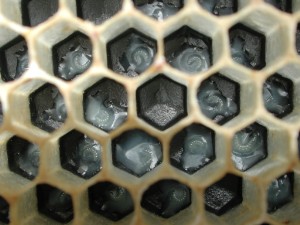
In beekeeping, bee brood or brood refers to the eggs, larvae and pupae of honeybees. The brood of Western honey bees develops within a bee hive. In man-made, removable frame hives, such as Langstroth hives, each frame which is mainly occupied by brood is called a brood frame. Brood frames usually have some pollen and nectar or honey in the upper corners of the frame. The rest of the brood frame cells may be empty or occupied by brood in various developmental stages. During the brood raising season, the bees may reuse the cells from which brood has emerged for additional brood or convert it to honey or pollen storage. Bees show remarkable flexibility in adapting cells to a use best suited for the hive's survival.
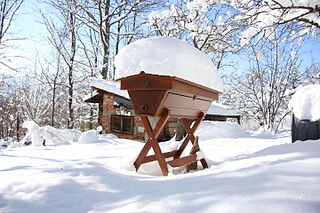
A top-bar hive is a single-story frameless beehive in which the comb hangs from removable bars. The bars form a continuous roof over the comb, whereas the frames in most current hives allow space for bees to move up or down between boxes. Hives that have frames or that use honey chambers in summer but which use management principles similar to those of regular top-bar hives are sometimes also referred to as top-bar hives. Top-bar hives are rectangular in shape and are typically more than twice as wide as multi-story framed hives commonly found in English-speaking countries. Top-bar hives usually include one box only, and allow for beekeeping methods that interfere very little with the colony. While conventional advice often recommends inspecting each colony each week during the warmer months, heavy work when full supers have to be lifted, some beekeepers fully inspect top-bar hives only once a year, and only one comb needs to be lifted at a time.
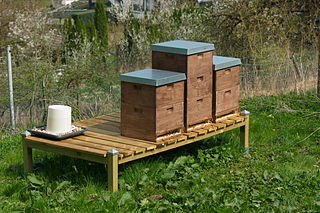
In modern American beekeeping, a Langstroth hive is any vertically modular beehive that has the key features of vertically hung frames, a bottom board with entrance for the bees, boxes containing frames for brood and honey and an inner cover and top cap to provide weather protection. In a Langstroth hive, the bees build honeycomb into frames, which can be moved with ease. The frames are designed to prevent bees from attaching honeycombs where they would either connect adjacent frames, or connect frames to the walls of the hive. The movable frames allow the beekeeper to manage the bees in a way which was formerly impossible.

The Caucasian honey bee is a subspecies of the western honey bee.

Moses Quinby was an American beekeeper from the State of New York. He is remembered as the father of practical beekeeping and the father of commercial beekeeping in America. He is best known as the inventor of the bee smoker with bellows. He was the author of numerous articles and several books on beekeeping.
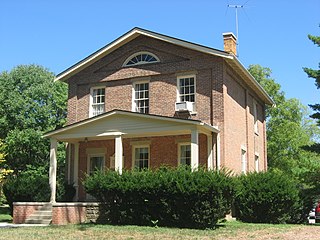
Langstroth Cottage is a historic building on the Western College campus of Miami University in Oxford, Ohio. It was designated a National Historic Landmark on June 22, 1976. The cottage, built in 1856, is now the home for the Oxford office of the Butler County Regional Transit Authority. It was purchased for Beekeeper L. L. Langstroth in 1859, and he lived there for the next 28 years, conducting research and breeding honey bees.
Walter T. Kelley (1897–1986) was an American beekeeper who created a large bee equipment supply and queen breeding company based in Clarkson, Kentucky. Kelley also wrote extensively about apiculture and published the bee journal Modern Beekeeping.

Honey extraction is the central process in beekeeping of removing honey from honeycomb so that it is isolated in a pure liquid form.

Commercial Beekeeping in the United States dates back to the 1860s.

Beekeeping in New Zealand is reported to have commenced in 1839 with the importing of two skep hives by Mary Bumby, a missionary. It has since become an established industry as well a hobby activity.
Beekeeping is first recorded in Ireland in the seventh century. It has seen a surge in popularity in modern times, with the membership of beekeeping associations exceeding 4,500. The median average number of hives per beekeeper is three hives, while the average honey output per hive is 11.4 kg. The growth in the practice has occurred despite increased pressures on bees and beekeepers due to parasites, diseases and habitat loss.
Beekeeping in the United Kingdom is the maintenance of bee colonies by humans within the United Kingdom. It is a significant commercial activity that provides those involved with honey, beeswax, royal jelly, queen bees, propolis, flower pollen and bee pollen. Honeybees also provide pollination services to orchards and a variety of seed crops.
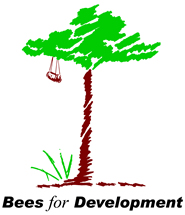
Bees for Development is an international charity working to alleviate poverty through beekeeping. Beekeeping contributes to supporting sustainable livelihoods in poor and remote communities; honey bees provide an essential ecosystem service. Bees for Development currently runs projects in Uganda, Zanzibar, Ethiopia and Kyrgyzstan. Its offices are in Monmouth, South Wales.
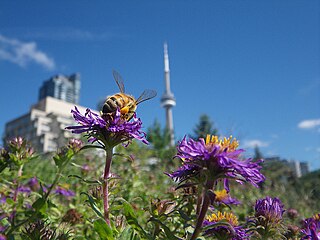
Urban beekeeping is the practice of keeping bee colonies (hives) in towns and cities. It is also referred to as hobby beekeeping or backyard beekeeping. Bees from city apiaries are said to be "healthier and more productive than their country cousins". As pollinators, bees also provide environmental and economic benefits to cities.

Beekeeping in Australia is a commercial industry with around 25,000 registered beekeepers owning over 670,000 hives in 2018. Most are found in the eastern states of Queensland, New South Wales, Victoria and Tasmania as well as the south-west of Western Australia.
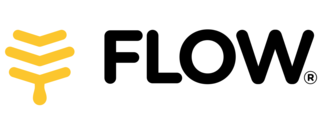
Flow Hive is a beehive brand that has a unique honey frame designed to allow honey extraction without needing to open the beehive. During extraction, visibly bees are disturbed less than during other methods.
















